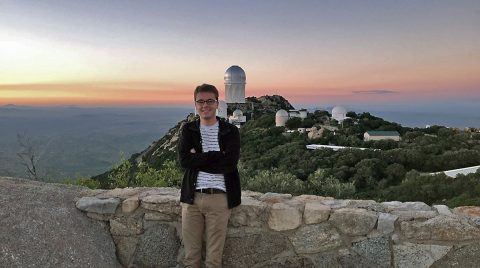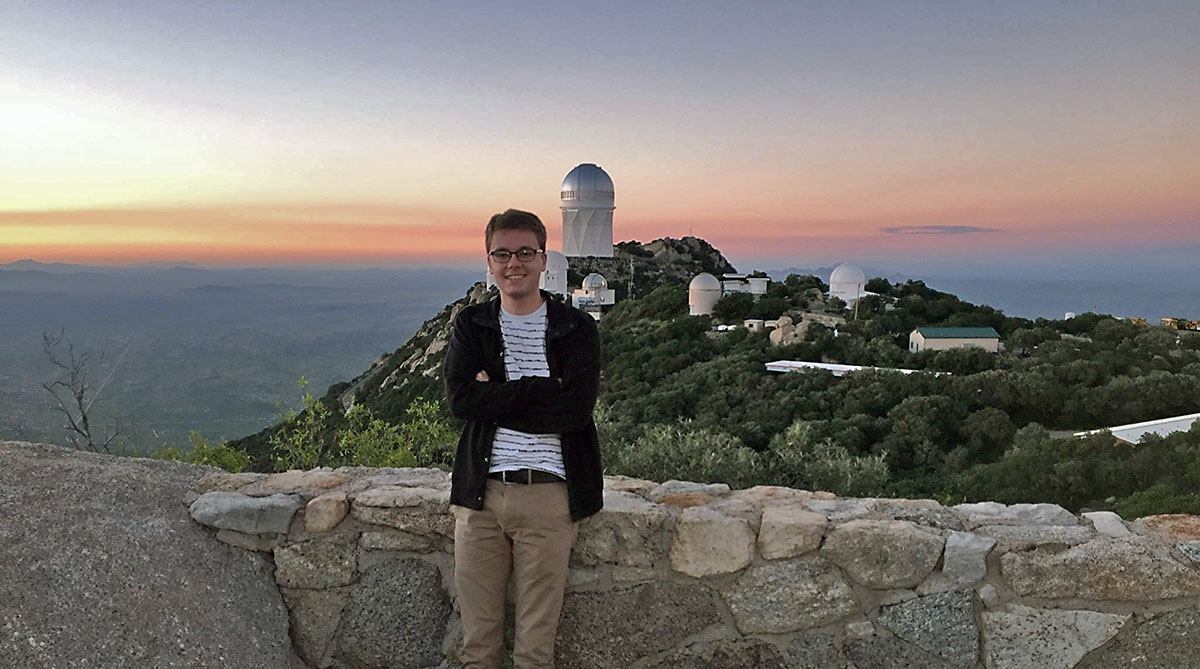 Clarksville, TN – Quasars—massive black holes that emit large amounts of radiation—are among the brightest objects in the universe, but that doesn’t mean they’re easy to identify.
Clarksville, TN – Quasars—massive black holes that emit large amounts of radiation—are among the brightest objects in the universe, but that doesn’t mean they’re easy to identify.
For centuries, they’ve been mistaken for other shining celestial objects, and in recent years, astronomers had yet to accurately identify a certain one of these brilliant specks in the southern sky.

“My first thought was, ‘I know this is a quasar, I hope it hasn’t been discovered yet,’” Robertson, a physics major, said.
It hadn’t. Now, Robertson is the second APSU student in recent years to make an important scientific discovery. In 2013, then-student Mees Fix also discovered a quasar while examining white dwarf stars.
Like Fix three years ago, Robertson spent some of the summer of 2016 at Fermilab—the U.S. Department of Energy’s national laboratory—with Dr. Allyn Smith, APSU professor of physics and astronomy, assisting with the international Dark Energy Survey. According to Fermilab’s website, the survey “is designed to probe the origin of the accelerating universe and help uncover the nature of dark energy by measuring the 14-billion-year history of cosmic expansion with high precision.”
“It was my job to go through and reduce the data to confirm that the stars in this sample were white dwarfs,” Robertson said. “I had read (Fix’s) paper, so I knew what a quasar spectrum was supposed to look like. When I came across (the object), I immediately knew it was a quasar.”
The APSU student will now be the lead author on an academic paper about the discovery. Smith and APSU physics student Deborah Gulledge, who also worked at Fermilab this summer, will be listed as co-authors.
Robertson, only a junior, already has a strong resume as a physics and astronomy researcher. In addition to his work at Fermilab, he traveled to Arizona in early September to conduct research at Kitt Peak National Observatory, and in August, he accompanied a team of APSU students to Montana State University to participate in the NASA-funded Eclipse Ballooning Project.
Information on that project is available online at www.apsu.edu/news/apsu-students-launch-high-altitude-balloon-during-2017-eclipse
“The unique thing about Austin Peay’s physics department is that there are so many opportunities to get involved in research,” Robertson said. “And the professors do push you to get involved in something.”
For more information on the APSU Department of Physics and Astronomy, visit www.apsu.edu/physics



